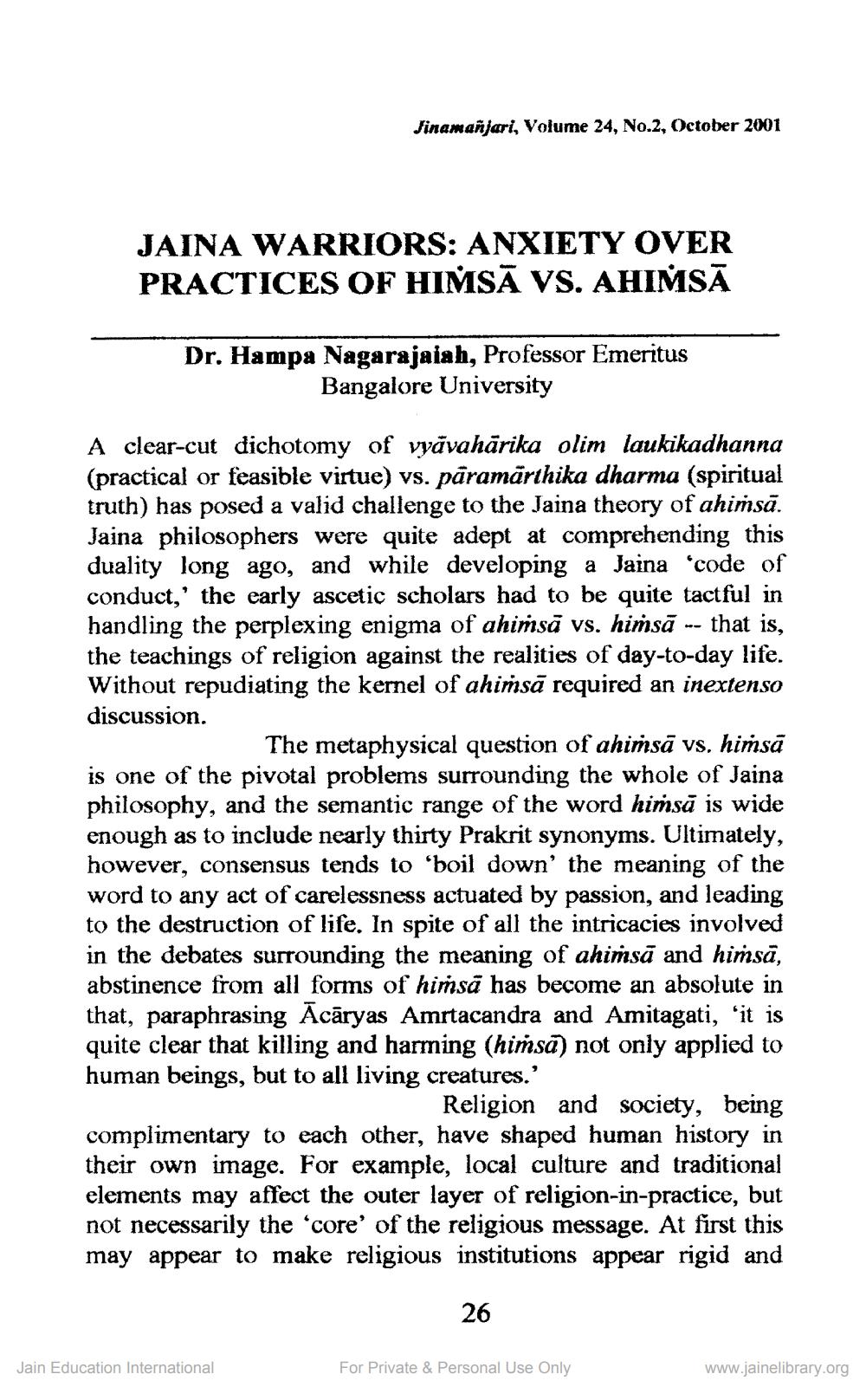________________
Jinamañjari, Volume 24, No.2, October 2001
JAINA WARRIORS: ANXIETY OVER PRACTICES OF HIŃSĀ VS. AHIŃSĀ
Dr. Hampa Nagarajaiah, Professor Emeritus
Bangalore University
A clear-cut dichotomy of vyāvahārika olim laukikadhanna (practical or feasible virtue) vs. päramärthika dharma (spiritual truth) has posed a valid challenge to the Jaina theory of ahimsā. Jaina philosophers were quite adept at comprehending this duality long ago, and while developing a Jaina 'code of conduct,' the early ascetic scholars had to be quite tactful in handling the perplexing enigma of ahimsā vs. himsā -- that is, the teachings of religion against the realities of day-to-day life. Without repudiating the kernel of ahiṁsā required an inextenso discussion.
The metaphysical question of ahimsā vs. hiṁsā is one of the pivotal problems surrounding the whole of Jaina philosophy, and the semantic range of the word himsā is wide enough as to include nearly thirty Prakrit synonyms. Ultimately, however, consensus tends to boil down' the meaning of the word to any act of carelessness actuated by passion, and leading to the destruction of life. In spite of all the intricacies involved in the debates surrounding the meaning of ahimsā and himsā, abstinence from all forms of hissä has become an absolute in that, paraphrasing Ācāryas Amrtacandra and Amitagati, “it is quite clear that killing and harming (hińsā) not only applied to human beings, but to all living creatures.'
Religion and society, being complimentary to each other, have shaped human history in their own image. For example, local culture and traditional elements may affect the outer layer of religion-in-practice, but not necessarily the 'core' of the religious message. At first this may appear to make religious institutions appear rigid and
26
Jain Education International
For Private & Personal Use Only
www.jainelibrary.org




